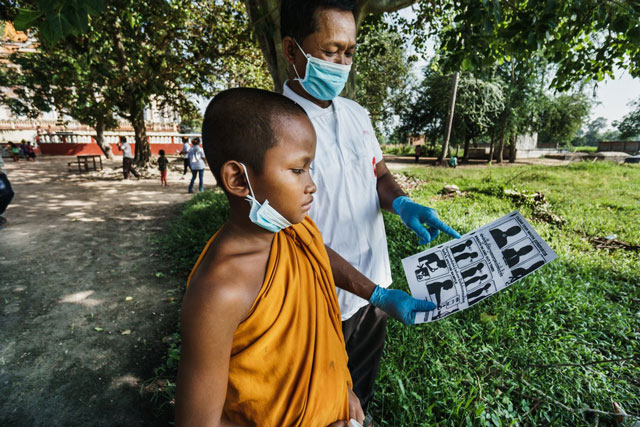
Kampala, Uganda | THE INDEPENDENT | Deaths from tuberculosis – one of the top infectious killers in the world – have increased for the first time in a decade, as a direct result of the COVID-19 pandemic, according to the World Health Organization.
Tuberculosis (TB) is the second deadliest infectious killer after COVID-19. It is caused by the bacteria Mycobacterium tuberculosis that most often affects the lungs and spreads when people who are sick with TB expel bacteria into the air, mainly by coughing.
But New data from the UN health agency highlighted how years of global progress in tackling the preventable disease had been reversed since the pandemic overwhelmed health care systems in 2020, preventing vulnerable people from seeking help.
WHO’s 2021 Global TB report shows that Lockdowns, which were adopted globally as a measure to forestall the spread of COVID-19, had also blocked many people’s access to essential health care services, and warns that the death toll from the disease could be much higher in 2021 and 2022.
Covering the response to the epidemic in 197 countries and areas, the TB report found that in 2020, some 1.5 million people died from TB in 2020 – more than in 2019. This included 214,000 patients with HIV, the UN agency said, noting that the overall TB increase was mainly in 30 countries which include Uganda, Kenya, Tanzania, Angola, Central African Republic, Angola, Indonesia, Pakistan, the Philippines and Zambia.
“This report confirms our fears that the disruption of essential health services due to the pandemic could start to unravel years of progress against tuberculosis,” said WHO Director-General, Tedros Adhanom Ghebreyesus. “This is alarming news that must serve as a global wake-up call to the urgent need for investments and innovation to close the gaps in diagnosis, treatment and care for the millions of people affected.”
In a worrying development, WHO noted that the number of newly diagnosed people with the disease fell from 7.1 million in 2019 to 5.8 million in 2020, meaning that far fewer people were diagnosed, treated or provided with TB preventive treatment compared with 2019.
Men accounted for 56 per cent of cases in 2020, ahead of women (33 per cent) and children (11 per cent). WHO says that many new cases of TB are attributable to undernutrition, HIV infection, alcohol use disorders, smoking and diabetes. There was also a reduction in the provision of TB preventative treatment. Some 2.8 million people accessed this in 2020, which was a 21 per cent reduction since 2019.
In addition, the number of people treated for drug-resistant TB fell by 15 per cent, from 177,000 in 2019 to 150,000 in 2020, equivalent to only about one in three of those in need.
Today, some 4.1 million people suffer from TB but have not been diagnosed with the disease or their status has not been reported to national authorities. This is up from 2.9 million in 2019. About 85 per cent of people who develop TB can be treated with a six-month drug regimen; treatment has the added benefit of curtailing onward transmission of infection.
The report’s recommendations include a call for countries to put in place urgent measures to restore access to essential TB services, a doubling of investment in TB research and innovation and concerted action across the health sector and others to address the social, environmental and economic causes of TB and its consequences.
****
URN
 The Independent Uganda: You get the Truth we Pay the Price
The Independent Uganda: You get the Truth we Pay the Price



